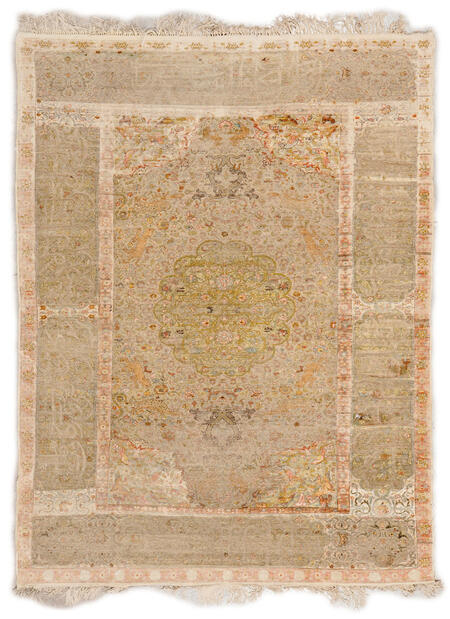bursa
Contemporaneous records show that the silk weaving ateliers of Bursa and Istanbul were carefully monitored by the Ottoman Court, the number of looms and the usage of precious metals was strictly controlled and workshops producing anything but the highest quality of textiles were forcibly closed down. It would follow that the designs were also closely monitored and that weavers and designers were forced to follow strict guidelines as to form and content and could, therefore, only show their creativity and inventiveness within a very narrow remit. With a limited number of ornaments and a restricted range of color the Ottoman textile designers were able to achieve impressive versatility using barely perceptible changes and by constantly modifying composition and using alternative combinations of motifs. They were able to ensure that within the considerable number of silks with offset rows of carnations that are extant, there are very few identical examples. Carnations have five, seven or even nine petals, they may have variations of floral sprays within each petal or none; the root, leaf and secondary palmette motifs have minute permutations and subtle changes. Although crimson velvet is the dominant color, green, blue, ivory and yellow detailing can be used along with endless variations within the placement and usage of gilt and silver metal thread.
read more
- width:
- length:
- retail:
- trade:
- ARCHIVE SALE
- Vegan
- eco-friendly
- Round
- Square
- Runner
